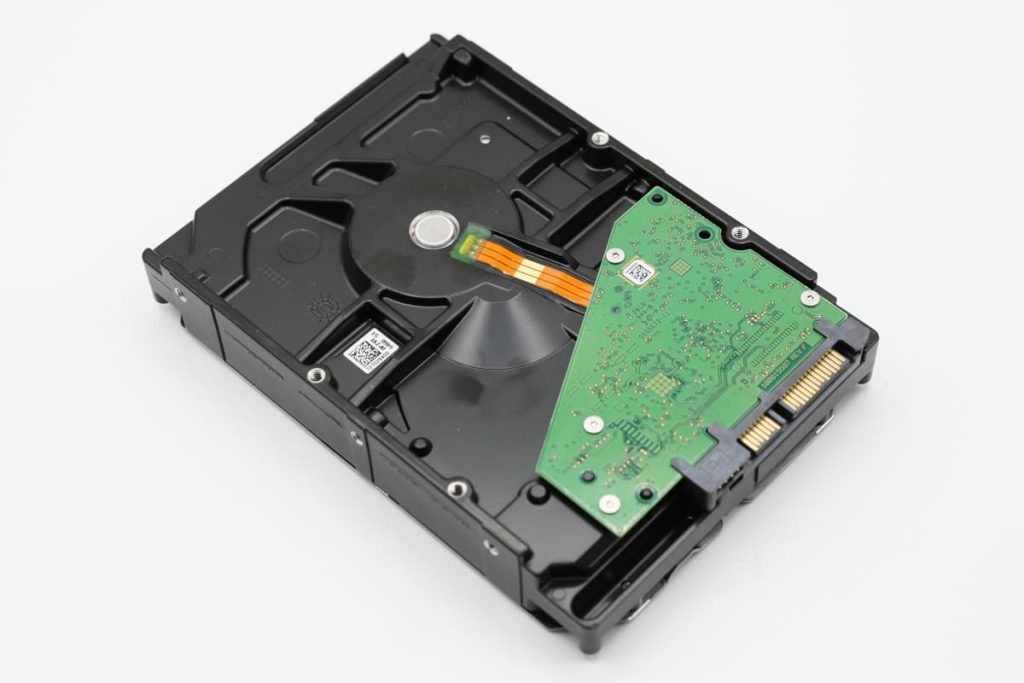A Serial ATA hard drive, short for Serial Advanced Technology Attachment, represents a major leap in storage technology. It provides faster data transfer speeds and better efficiency than older models. Whether you’re a tech expert or new to the field, understanding what a SATA hard drive is and its role in your computer setup is crucial for making smart hardware choices. We’ll provide you with all the essential details about SATA drives, including their definition, functionality, and applications.
Serial ATA Features
Serial ATA hard drives were first introduced in 2003 as a replacement for the then-dominant Parallel ATA (PATA) interface. Compared to its predecessor, SATA aimed to increase storage capabilities, reduce costs, and improve efficiency. Another benefit of SATA is its compatibility with various devices, such as hard disk drives, solid-state drives (SSD), optical drives, and even external storage options.

Cables and Connectors
Serial ATA also introduced smaller, more efficient cables and connectors. These cables are thinner and have fewer pins than PATA’s bulky ribbon cables, allowing for better airflow in the computer case. The connectors have also been redesigned to be more secure, preventing accidental disconnections. SATA hard drives are widely used in both personal computers and enterprise-level servers due to their reliability, speed, and compatibility.
Sizes of Serial ATA Drives
SATA drives come in different sizes to fit various needs and physical spaces. The most common sizes are:
- 3.5-inch drives: Typically used in desktop computers and servers, offering larger capacity and durability.
2.5-inch drives: Commonly found in laptops and compact devices, with a smaller footprint and lower power usage.
There are also smaller types like mSATA and M.2 drives, perfect for ultra-thin laptops and high-performance computing. This variety ensures Serial ATA drives can meet all kinds of storage needs, from big data solutions to portable and efficient uses.
Reasons to Use SATA Drives
One primary reason Serial ATA drives are popular is their affordability. They are cheaper than other interfaces, making them a top choice for budget-friendly builds. Another benefit is their backward compatibility with older devices, allowing newer Serial ATA versions to work with previous generations.
Moreover, SATA drives offer excellent performance compared to older interfaces like PATA and IDE, with data transfer speeds ranging from 3 Gbps to 6 Gbps, reducing system lag and boosting overall efficiency.
Is a SATA Drive an HDD or an SSD
A Serial ATA drive can be either an HDD or an SSD. Understanding the differences between these two types of drives is crucial for making informed decisions about your storage needs.
SATA HDD – Traditional Storage with Moving Parts: Serial ATA HDDs have mechanical parts like spinning platters and a read/write head.
They offer larger storage capacities and lower cost per gigabyte, making them great for storing large amounts of data like media files, software, and backups. However, they wear out over time and have slower data transfer speeds compared to SSDs.

SATA SSD – Speed and Reliability: Serial ATA SSDs use flash memory, making them faster, more reliable, and more energy-efficient than HDDs. They’re great for quick data access tasks like running operating systems, applications, and gaming. While SSDs are pricier than HDDs, their costs are dropping, making them more affordable. The improved speed and durability of SSDs can significantly boost system performance.
In summary, SATA HDDs and SSDs each have their benefits. HDDs are cost-effective and offer more storage, while SSDs provide speed and reliability. Understanding these differences enables you to choose the best storage solution for your needs.
Causes of SATA Hard Drive Failures
Despite their reliability and efficiency, SATA hard drives can still experience failures. Understanding the common causes behind these failures can help in taking preventive measures or diagnosing issues quickly. Here are some common Serial ATA hard drive failure causes:
- Mechanical Failures: Mechanical failures are frequent in SATA HDDs due to moving parts. Regular backups and monitoring can mitigate the risks.
- Electrical Issues: Sudden power surges, faulty power supplies, or electrical component failures can damage the drive’s circuit board or disrupt its operation.
- Firmware Corruption: Firmware issues can occur due to improper updates, malware attacks, or software problems. Keeping firmware updated and maintaining robust security software can help circumvent these issues.

- Physical Damage: Drops, impacts, or extreme temperatures can harm the hard drive. To prevent physical damage, ensure the drive is securely mounted and not exposed to harsh environments.
- Overheating: Inadequate cooling or excessive ambient temperatures can cause overheating, damaging internal components and reducing the drive’s lifespan.
- Logical Failures: Software errors, corrupted files, or malware infections can cause logical failures. Regularly scanning for malware and maintaining an organized file system can minimize these risks.
By being aware of these common causes and implementing preventive measures, users can extend the lifespan of their SATA hard drives and protect their valuable data.
How to Recover Data from a Failed SATA Drive
Data failure is a common and often stressful issue, particularly when vital information is lost. Fortunately, several methods are available to recover data from Serial ATA drive failures. The success of these recovery efforts largely depends on the nature and severity of the failure.
If you’re in New York and need data recovery services, Data Recovery New York is your premier solution. We excel at recovering data from different storage devices, such as SATA hard drives, regardless of the failure type. Contact us directly at 347.427.5314 or submit a help request.
Frequently Asked Questions
What Does SATA Stand For?
SATA stands for Serial Advanced Technology Attachment. It is a standard for connecting and transferring data from hard drives to computer systems. It is known for its faster data transfer rates and enhanced efficiency over older standards like PATA.
What Are the Advantages of Using Serial ATA Hard Drives?
Serial ATA hard drives offer faster data transfer rates, greater storage capacities, and improved reliability over older technologies. They are also widely compatible with most modern computer systems.
What Are the Differences Between SATA and PATA?
Serial ATA offers faster speeds, thinner and more flexible cables, hot swapping capabilities, and support for more drives per channel compared to PATA.
What Are the Primary Differences Between SATA and SAS?
SATA is common in personal computers with slower data transfer rates, while SAS is used in enterprise systems with much faster data transfer rates and higher data capacity.
What Should You Do If Your Serial ATA Hard Drive Fails?
If your SATA hard drive fails, stop using it immediately to prevent further damage. Seek help from professional data recovery services for the best chance of recovering your data.

